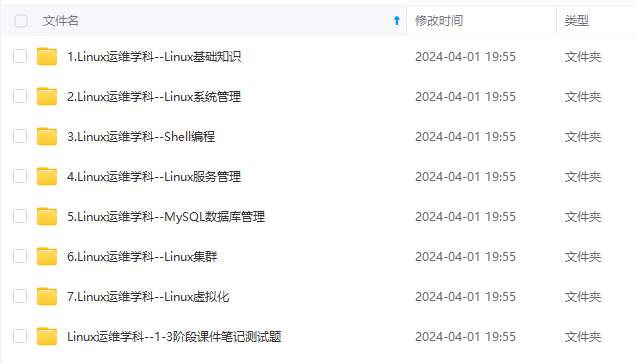k8s velero 备份与回复
一 环境准备1.下载velero,我用的是1.8.1Releases · vmware-tanzu/velero · GitHubBackup and migrate Kubernetes applications and their persistent volumes - Releases · vmware-tanzu/velerohttps://github.com/vmware-tanzu
一 环境准备
1.下载velero,我用的是1.8.1
2.解压
tar -xf velero-v1.8.1-linux-amd64.tar.gz -C /usr/local
ln -s /usr/local/velero-v1.8.1-linux-amd64/velero /usr/bin/velero
ln -s /usr/local/velero-v1.8.1-linux-amd64/velero /usr/lcoal/bin/velero
二 安装minio
1.创建minio凭证
tee /tmp/credentials-velero <<'EOF' [default] aws_access_key_id = minio aws_secret_access_key = minio123 EOF
2.编辑minio的yaml文件,/usr/local/velero-v1.8.1-linux-amd64/examples/minio/00-minio-deployment.yaml
注:需要增加 console-address 否则不能访问minio,并且它的端口也要通过nodeport暴漏出去,具体的可以根据下面的文件对比进行配置
# Copyright 2017 the Velero contributors.
#
# Licensed under the Apache License, Version 2.0 (the "License");
# you may not use this file except in compliance with the License.
# You may obtain a copy of the License at
#
# http://www.apache.org/licenses/LICENSE-2.0
#
# Unless required by applicable law or agreed to in writing, software
# distributed under the License is distributed on an "AS IS" BASIS,
# WITHOUT WARRANTIES OR CONDITIONS OF ANY KIND, either express or implied.
# See the License for the specific language governing permissions and
# limitations under the License.
---
apiVersion: v1
kind: Namespace
metadata:
name: velero
---
apiVersion: apps/v1
kind: Deployment
metadata:
namespace: velero
name: minio
labels:
component: minio
spec:
strategy:
type: Recreate
selector:
matchLabels:
component: minio
template:
metadata:
labels:
component: minio
spec:
volumes:
- name: storage
emptyDir: {}
- name: config
emptyDir: {}
containers:
- name: minio
image: minio/minio:latest
imagePullPolicy: IfNotPresent
args:
- server
- /storage
- --config-dir=/config
- --console-address
- ":30605"
env:
- name: MINIO_ACCESS_KEY
value: "minio"
- name: MINIO_SECRET_KEY
value: "minio123"
ports:
- name: web
containerPort: 9000
- name: console
containerPort: 30605
volumeMounts:
- name: storage
mountPath: "/storage"
- name: config
mountPath: "/config"
---
apiVersion: v1
kind: Service
metadata:
namespace: velero
name: minio
labels:
component: minio
spec:
# ClusterIP is recommended for production environments.
# Change to NodePort if needed per documentation,
# but only if you run Minio in a test/trial environment, for example with Minikube.
type: NodePort
ports:
- name: web
port: 9000
targetPort: 9000
nodePort: 30090
protocol: TCP
- name: console
port: 30605
targetPort: 30605
nodePort: 30605
protocol: TCP
selector:
component: minio
---
apiVersion: batch/v1
kind: Job
metadata:
namespace: velero
name: minio-setup
labels:
component: minio
spec:
template:
metadata:
name: minio-setup
spec:
restartPolicy: OnFailure
volumes:
- name: config
emptyDir: {}
containers:
- name: mc
image: minio/mc:latest
imagePullPolicy: IfNotPresent
command:
- /bin/sh
- -c
- "mc --config-dir=/config config host add velero http://minio:9000 minio minio123 && mc --config-dir=/config mb -p velero/velero"
volumeMounts:
- name: config
mountPath: "/config"
3.部署minio
kubectl apply -f 00-minio-deployment.yaml
并 查看 svc
kubectl get svc -n velero

4.访问minio
并输入账号密码 minio minio123

5.安装velero客户端
velero install \
--image velero/velero:v1.8.1 \
--provider aws \
--bucket velero \
--namespace velero \
--plugins velero/velero-plugin-for-aws:v1.2.0 \
--secret-file ./credentials-velero \
--velero-pod-cpu-request 200m \
--velero-pod-mem-request 200Mi \
--velero-pod-cpu-limit 1000m \
--velero-pod-mem-limit 1000Mi \
--use-volume-snapshots=false \
--use-restic \
--restic-pod-cpu-request 200m \
--restic-pod-mem-request 200Mi \
--restic-pod-cpu-limit 1000m \
--restic-pod-mem-limit 1000Mi \
--backup-location-config region=minio,s3ForcePathStyle="true",s3Url=http://192.168.3.241:30090s3Url = 刚搭建的minio server
6.查看velero所有的服务

7.至此安装velero成功
这块版本要一致不一致会提示你警告
三 备份不带pvc的服务
1.可以用velero里面的 nginx做测试
cd /usr/local/velero-v1.8.1-linux-amd64/examples/nginx-app
kubectl apply -f base.yaml
2.执行下面的命令备份
备份的方式由很多种
1.根据selector选择器
velero backup create nginx-backup --selector app=nginx
2.根据命名空间
velero backup create nginx-backup --include-namespaces nginx-example
3.其它还有比如加入定时等等,可以在晚上查询下api
4.获取备份的数据
velero backup get
3. 通过minio查看备份的数据

4.备份恢复
1.先删除现有的namespace
kubeclt delete ns nginx-example
2.执行恢复命令
velero restore create --from-backup nginx-backup
3.查看服务是否正常
kubectl get pod -n nginx-example
四 备份带pvc的服务
1.以mysql举例,可以通过这个下载yaml文件进行安装
https://download.csdn.net/download/liudongyang123/85123519 https://download.csdn.net/download/liudongyang123/85123519 2.利用restic对pvc进行备份,需要给pod加上注解
https://download.csdn.net/download/liudongyang123/85123519 2.利用restic对pvc进行备份,需要给pod加上注解
kubectl -n {namespace} annotate pod {podname} backup.velero.io/backup-volumes={volumes}
namespace:命名空间
podname:mysql pod的名称
volumes:卷名称
3.执行备份命令
velero backup create mysql-pvc-backup --snapshot-volumes --include-namespaces mysql
4.删除mysql
kubectl delete ns mysql
5.恢复
velero restore create --from-backup mysql-pvc-backup --restore-volumes
更多推荐
 已为社区贡献8条内容
已为社区贡献8条内容

 https://github.com/vmware-tanzu/velero/releases
https://github.com/vmware-tanzu/velero/releases










所有评论(0)